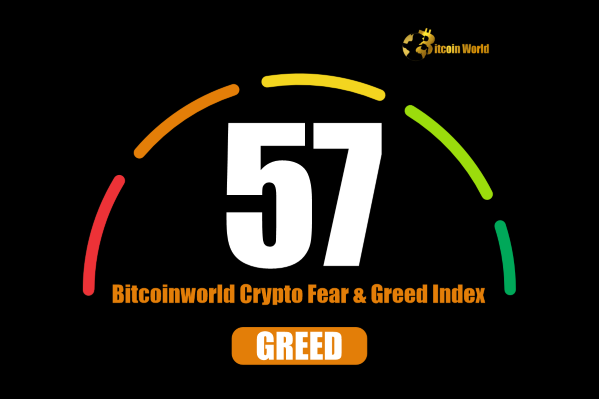BitcoinWorld

Polymarket’s Revolutionary Leap: The Potential of a New Stablecoin
The world of decentralized finance (DeFi) is constantly evolving, pushing the boundaries of what’s possible with blockchain technology. One of the most intriguing developments on the horizon involves Polymarket, a leading decentralized prediction marketplace, which is reportedly considering the issuance of its own Polymarket stablecoin. This move, as reported by CoinDesk, could mark a significant turning point not just for Polymarket itself, but for the broader prediction market ecosystem and the utility of stablecoins within specialized DeFi applications. Imagine a world where your predictions are not just settled in a generic stablecoin, but one intrinsically linked to the platform you trust. This is the exciting prospect Polymarket is exploring, aiming to enhance user experience, reduce friction, and potentially unlock new functionalities.
Why is Polymarket Considering a Polymarket Stablecoin?
At its core, a prediction market allows users to bet on the outcome of future events, from political elections to cryptocurrency prices. These markets typically rely on stablecoins like USDC or USDT for transactions, providing a stable medium of exchange. However, relying on external stablecoins comes with certain dependencies and potential inefficiencies. Polymarket’s exploration into its own Polymarket stablecoin suggests a strategic vision to gain greater control and optimize its operations. Let’s delve into the compelling reasons behind this potential strategic shift:
- Enhanced User Experience: An in-house stablecoin could streamline the user experience by reducing conversion steps and associated fees. Users would deposit and withdraw a stablecoin directly tied to the platform, making participation smoother and more intuitive. This could remove a layer of complexity often faced by new users navigating the DeFi space.
- Reduced Transaction Costs: While external stablecoins are generally efficient, a native stablecoin might allow Polymarket to optimize gas fees or transaction costs within its ecosystem, especially if it’s designed with specific blockchain efficiencies in mind. This could lead to more competitive odds and higher payouts for successful predictions.
- Greater Control and Customization: Issuing its own stablecoin would give Polymarket greater control over its financial infrastructure. This opens up possibilities for custom features, specific integrations, and potentially even unique incentive mechanisms tied directly to the stablecoin’s usage within the platform. For instance, Polymarket could implement a fee structure that favors its native stablecoin, encouraging adoption.
- Brand Building and Ecosystem Growth: A dedicated Polymarket stablecoin could become a strong brand identifier, reinforcing Polymarket’s position as a leader in the decentralized prediction market space. It could also foster a more cohesive and loyal community around the platform, as users become more invested in its native assets.
- Mitigating External Risks: While USDC and USDT are widely used, they are still subject to their own issuer risks and regulatory scrutiny. By issuing its own stablecoin, Polymarket could potentially diversify its risk exposure, though it would also take on new responsibilities related to its own stablecoin’s stability and compliance.
Understanding the Mechanics: How Would a Polymarket Stablecoin Work?
The precise mechanics of a Polymarket stablecoin would depend on its design, but generally, stablecoins maintain their peg to a fiat currency (like the US dollar) through various collateralization methods. Here are the most common models Polymarket might consider:
| Stablecoin Model | Description | Pros for Polymarket | Cons for Polymarket |
|---|---|---|---|
| Fiat-Collateralized | Each stablecoin is backed 1:1 by traditional currency (e.g., USD) held in reserves by a trusted third party. | High trust and stability, widely understood. | Requires significant regulatory compliance, regular audits, centralized custody risks. |
| Crypto-Collateralized | Backed by other cryptocurrencies (e.g., ETH, DAI) held in smart contracts, often over-collateralized. | Decentralized, transparent on-chain reserves. | Volatility of underlying crypto assets, requires robust liquidation mechanisms. |
| Algorithmic | Maintains peg through smart contracts that automatically adjust supply based on demand, often using a seigniorage model. | Highly decentralized, no direct collateral required. | Complex to design and maintain, higher risk of de-pegging during extreme market conditions. |
Given Polymarket’s decentralized nature, a crypto-collateralized or a hybrid model (perhaps backed by a mix of established stablecoins and other crypto assets) might align more closely with its ethos. The challenge would be to ensure robust stability mechanisms, transparent auditing, and efficient peg maintenance, especially during periods of high market volatility.
What are the Potential Challenges for a Polymarket Stablecoin?
While the prospect of a native Polymarket stablecoin is exciting, it’s not without its hurdles. Issuing a stablecoin is a complex undertaking that comes with significant responsibilities and potential pitfalls:
- Regulatory Scrutiny: Stablecoins are increasingly under the microscope of global regulators. Polymarket would need to navigate a complex and evolving legal landscape, ensuring compliance with various jurisdictions regarding money transmission, securities laws, and consumer protection. This is perhaps the biggest challenge, as regulatory clarity for decentralized entities and their native tokens is still nascent.
- Maintaining the Peg: The core function of any stablecoin is to maintain its peg to the underlying asset (e.g., USD). This requires sophisticated mechanisms, whether through robust collateral management, algorithmic stability, or a combination. A de-pegging event could severely damage user trust and the platform’s reputation.
- Liquidity and Adoption: For the stablecoin to be successful, it needs deep liquidity and widespread adoption within and potentially outside the Polymarket ecosystem. Building this liquidity from scratch requires significant effort, partnerships, and incentives. Users need to feel confident that they can easily convert the Polymarket stablecoin to other assets or fiat.
- Security Risks: Like any blockchain-based asset, the stablecoin would be susceptible to smart contract vulnerabilities, hacking attempts, or other security breaches. Rigorous auditing and ongoing security measures would be paramount to protect user funds.
- Reputational Risk: If the stablecoin fails to maintain its peg or faces significant regulatory issues, it could severely impact Polymarket’s brand and user base. The responsibility for the stablecoin’s stability would rest squarely on Polymarket’s shoulders.
The Broader Impact: How Could a Native Stablecoin Reshape Prediction Markets?
The introduction of a Polymarket stablecoin could have far-reaching implications beyond just the platform itself. It could set a precedent for other decentralized applications (dApps) and specialized DeFi protocols to issue their own native stable assets, fostering a more fragmented yet potentially more efficient ecosystem. Consider these potential impacts:
- Increased Decentralization: By reducing reliance on third-party stablecoin issuers, Polymarket could further decentralize its financial operations, aligning more closely with the core tenets of blockchain technology.
- Innovation in DeFi: A successful native stablecoin could inspire other prediction markets or similar dApps to explore similar models, leading to a wave of innovation in how specialized platforms manage their internal economies.
- New Revenue Streams: Depending on its design, a Polymarket stablecoin could potentially open up new revenue streams for the platform, perhaps through transaction fees, interest on reserves, or other mechanisms, contributing to its long-term sustainability.
- Enhanced Market Efficiency: With a stablecoin tailored to its specific needs, Polymarket could potentially offer more efficient market mechanisms, faster settlement times, and potentially even more complex betting structures.
This strategic move highlights a growing trend in the crypto space: protocols seeking to build more self-contained and optimized ecosystems. While challenging, the rewards of a successful native stablecoin could be substantial, positioning Polymarket at the forefront of innovation in decentralized prediction markets.
Actionable Insights for Users and Enthusiasts
For those closely watching Polymarket and the broader DeFi space, this development offers several key areas to focus on:
- Monitor Official Announcements: Stay tuned to Polymarket’s official channels for any concrete announcements regarding the stablecoin’s development, design, and launch timeline.
- Understand the Stablecoin’s Design: When details emerge, pay close attention to the stablecoin’s collateralization model, auditing practices, and any unique features. This will be crucial for assessing its stability and trustworthiness.
- Assess Regulatory Compliance: Keep an eye on how Polymarket addresses regulatory concerns, as this will be a major determinant of the stablecoin’s long-term viability and adoption.
- Evaluate Liquidity and Adoption: Once launched, observe the stablecoin’s liquidity on exchanges and its adoption within the Polymarket ecosystem. High liquidity is essential for seamless trading and usage.
This potential venture by Polymarket is a testament to the continuous innovation within the decentralized finance sector. It underscores the drive to create more efficient, user-friendly, and self-reliant ecosystems that push the boundaries of traditional finance.
In conclusion, Polymarket’s consideration of issuing its own Polymarket stablecoin is a bold and potentially game-changing move. It signifies a strategic effort to enhance its platform, gain greater operational autonomy, and further solidify its position as a leader in decentralized prediction markets. While significant challenges, particularly in regulatory compliance and maintaining stability, lie ahead, the potential benefits for user experience, efficiency, and ecosystem growth are immense. This development bears close watching, as it could very well set a new standard for specialized DeFi protocols aiming to build more robust and integrated financial infrastructures.
Frequently Asked Questions (FAQs)
Q1: What is a stablecoin?
A1: A stablecoin is a type of cryptocurrency designed to maintain a stable value, typically pegged to a fiat currency like the US dollar, or a commodity like gold. This stability is achieved through various mechanisms, including holding reserves of the underlying asset, using other cryptocurrencies as collateral, or employing algorithmic methods.
Q2: Why would Polymarket issue its own stablecoin instead of using existing ones like USDC?
A2: Issuing its own stablecoin could offer Polymarket greater control over its financial infrastructure, potentially reduce transaction costs for users, enhance the overall user experience by streamlining processes, and foster a stronger brand identity within its ecosystem. It also reduces reliance on external stablecoin issuers.
Q3: What are the biggest risks associated with Polymarket issuing a stablecoin?
A3: The primary risks include navigating complex and evolving regulatory landscapes, ensuring the stablecoin consistently maintains its peg to the underlying asset (e.g., USD), building sufficient liquidity for widespread adoption, and mitigating potential security vulnerabilities. Reputational risk is also significant if the stablecoin fails to perform as expected.
Q4: How would a Polymarket stablecoin benefit users of the prediction market?
A4: Users could benefit from reduced transaction fees, a more seamless and intuitive trading experience within the platform, and potentially faster settlement times. A native stablecoin might also enable new platform-specific features or incentive programs that enhance user engagement.
Q5: What impact could this have on the broader decentralized finance (DeFi) space?
A5: If successful, Polymarket’s stablecoin could set a precedent for other specialized DeFi protocols to issue their own native stable assets, leading to increased innovation in how dApps manage their internal economies. It could contribute to a more decentralized and efficient ecosystem, albeit potentially more fragmented.
If you found this article insightful, please share it with your network! Help us spread the word about the exciting developments in decentralized finance and Polymarket’s innovative stride towards a native stablecoin. Your shares help more people understand the future of prediction markets.
To learn more about the latest crypto market trends, explore our article on key developments shaping decentralized finance institutional adoption.
This post Polymarket’s Revolutionary Leap: The Potential of a New Stablecoin first appeared on BitcoinWorld and is written by Editorial Team





